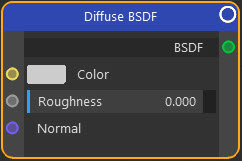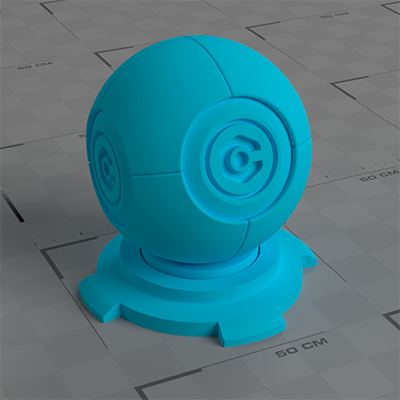Shaders: Diffuse BSDF
Node Interface

Example Output
Overview
| Function | Output a colour value without reflections/speculars |
| Nearest C4D equivalent | Simple material with the reflectance channel disabled |
When you create a new Dffiuse BSDF Material, this node is automatically created and linked to the output node. This node is not always required in an Object Material - you could create a pure reflective material using a Glossy BSDF node alone, for example - but is often included as it gives a coloured surface with no reflection that can be mixed with other nodes to get the desired result.
Settings
Note: a * symbol next to the name indicates the parameter also has an input port. A # symbol indicates that the parameter can only be changed with an input node, not in the node itself.
Color *
You can change the colour directly in this parameter, but you can input the colour from any other node which has a Color output. This is where you would link an Image Texture node to use a bitmap, for example.
Roughness *
The 'roughness' of the surface. This is a very subtle effect but can be very useful for surfaces which don't need a bump map but do need to look not perfectly smooth.
The range of values is from 0.0 to 1.0.
Normal #
With this setting you can alter the surface normals of the object, which will have a significant effect on the rendered output since it will affect the way light is reflected from the surface.
This setting requires a vector input, so you need to link another node with a vector output port to this port. For example, this is where you would link the output from a Bump node to give bump mapping of the surface or from a Normal Map node for normal mapping..
Output
BSDF
A shader port which can be linked with shader ports on other nodes.
